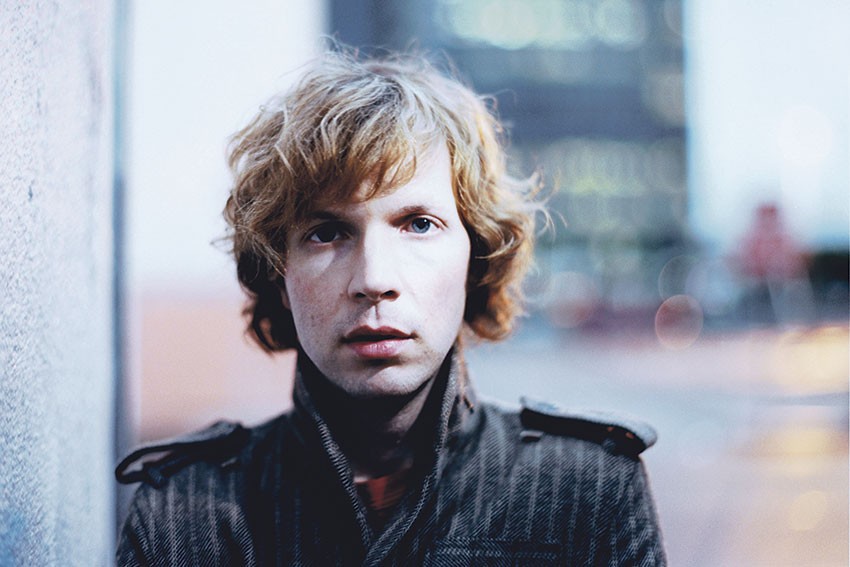Beck's Songbook

Beck’s new album Song Reader came out in December. Only it is not a recording, it is a songbook.
Beck’s Songbook Beck’s new album Song Reader came out in December. Only it is not a recording, it is a songbook. Sheet music for the purpose in that the person who buys it, brings the music to life. It’s out through an online publishing operation called McSweeney’s Internet Tendency – the link is here: mcsweeneys.net/pages/song-reader. The site describes “Twenty songs’ worth of sheet music, assembled into twenty individual song booklets, each decorated with ‘full-color, heyday-of-home-play-inspired art,’ and stored in a “lavishly produced hardcover carrying case.” Quite a daring idea. I looked at some online responses from people to the idea. Readers’ comments. As in most of these areas, the response is almost totally given to smartarsery and ill-informed nonsense. The first, hot thoughts, never the third or fourth more considered ones. I read a great interview with Beck where he talked of his interest in the project going back more than a decade. He wanted to take the time to have the right songs. He talked of how differently it made him think of what an actual song was. Recording and working a persona in a performing sense was what he’d been used to. This way, he talked of the songs having to have some crude power to come through in this most primitive way. He said that you had to write in very universal terms, almost on the edge of corniness and vulgarity. It was no place to be cool. He then talked of songwriters like Hank Williams and John Lennon who had done this. The songs had to be simple but strong. He mentioned a hit song by Bing Crosby in the 30s selling 53 million copies of sheet music – when the population of the USA was roughly 104 million. Jon Rose, in a 2007 Peggy Glanville Hicks lecture “Listening to history: some proposals for reclaiming the practice of music” tried to illustrate how close Australian people once were in relation to making music – that it was not a distant, mostly imported experience. “…. notion of one piano for every three or four Australians by the beginning of the 20th century could well be close to the mark. Here’s some statistics just from the Port of Melbourne for that year: 01888: 3,173 upright pianos and 1,247 organs were imported. By 1909 – 10,432 imported pianos. 1910 – 13,912 imported pianos. 1911 – 19,508 imported pianos. 1912 – 20,856 imported pianos. That’s 64,708 imported pianos in just four years”. Those people would have been buying sheet music and playing the songs themselves. They were so much closer to the stuff. They were in it, they had to dive in and swim. I do a radio show with Elizabeth McCarthy called Banana Lounge Broadcasting on RRR in Melbourne and we had the honour of the Pretty Things coming in to the studio. I tried to tease out of them what it was like to be involved in British music in the early 1960s. I asked what they’d thought – as Londoners – of The Beatles. (Hoping for an early reflection of the UK North/South divide). Both Dick Taylor and Phil May said they’d loved them. Dick said he’d first heard Love Me Do while sitting around with former band member Keith Richard. I asked how they heard it, trying to get out to the listeners how radio had changed. He said it was mostly people listening to records in each other’s houses. There was a one hour pop show on the BBC once a week. Otherwise, radio was for live performance and orchestras. For many years there were Musicians Union regulations for playing records and the use of tapes to pre-record programmes in both the USA and the UK. (Bing Crosby made a lot of dosh out of tape – and started the idea of pre-recording his radio shows so he could tour as well). Sheet music was big. Until Buddy Holly and the Beatles, artists did not write their own material. The A&R man put the songs with the performers. Artist and Repertoire. Then it all went to hell. Songs were written by ugly professionals – in hit factories. 9 to 5! First Tin Pan Alley in the world of musicals and then the Brill Building in the age of the transistor radio. The Beatles ruined that one too! As Mark E Smith noted, “Four proletariat idiots! En route to Candy Mountain!” If that wasn’t bad enough, the digital world fell on us and the whole world is now creative. And the notion of copyright is theft – disallowing the possibility of somebody having something! As David A Jasen says in Tin Pan Alley, “Between 1900 and 1910, one hundred songs were said to have sold more than one million copies each – and this to a national population of just over ninety million. The songs sold for an average of 50 cents a piece, when the average take-home wage of a family of four was $12.75.” Beck’s idea may be a return to something older but as every idiot I’ve met in the music business loves to parrot, “a song is a song”. Well, as every songwriter knows, the great freedom that comes when you try to write a song for a specific other person (rather than yourself) – a person you can see and imagine – is so different to finding and filling in some more blank space in your own façade. Beck had to confront all these ideas with this songbook. I’m getting a copy. I hope it has chord charts for guitar. I am blind to the flyshit.